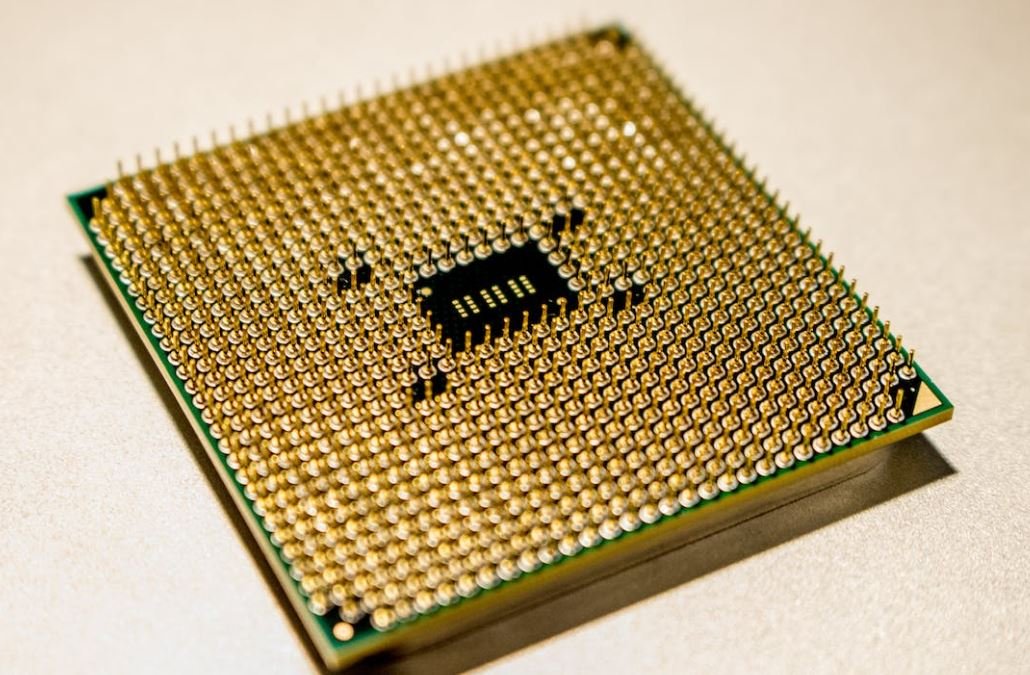Neural Network Illustration
Neural networks are a powerful technique in machine learning that mimic the functions and structure of the human brain. In this article, we will explore the basic concepts of neural networks and how they can be illustrated visually.
Key Takeaways:
- Neural networks emulate the behavior of a human brain to solve complex problems.
- They consist of interconnected nodes called neurons that process and transmit information.
- Neural network illustration helps visualize how information flows through the network.
**Neural networks** are composed of layers of interconnected nodes, known as **neurons**. Each neuron receives inputs, performs calculations, and produces an output that gets passed on to the next layer. *Through a process called **training**, neural networks learn to adjust the strength of connections between neurons to solve specific tasks and make predictions.* This ability to adapt and learn from data is what makes neural networks so powerful in various applications, from image recognition to natural language processing.
The Structure of Neural Networks
*The structure of a neural network can vary depending on the complexity of the problem it aims to solve.* However, most networks consist of three main types of layers: **input**, **hidden**, and **output** layers. Input layers receive initial data, hidden layers process and transform the information, and the output layer produces the final result. Each layer can contain multiple neurons, and connections between neurons carry information in the form of numerical values called **weights**.
The Role of Activation Functions
**Activation functions** introduce non-linearities into the neural network allowing it to approximate complex relationships between inputs and outputs. These functions determine whether a neuron is activated (fires) or not based on the weighted sum of its inputs. Common activation functions include **sigmoid**, **ReLU** (Rectified Linear Unit), and **tanh** (hyperbolic tangent), each with its own properties and applications.
Training Neural Networks
During training, neural networks adjust the weights of connections to minimize the difference between predicted and expected outputs. The process relies on an optimization algorithm, such as **gradient descent**, to iteratively update the weights until the network produces satisfactory results. *The size and quality of the training dataset, along with the complexity of the problem, can impact the time required for training and the accuracy of the model.*
Illustrating Neural Networks
Visualizing neural networks is crucial to understand how data flows through the network and how connections between neurons influence the output. **Flowcharts**, **diagrams**, and **graphical representations** help illustrate the structure and connectivity of neural networks. These visualizations not only aid researchers in explaining the inner workings of their models but also enhance comprehension for the broader audience.
| Activation Function | Accuracy (%) |
|---|---|
| Sigmoid | 75 |
| ReLU | 82 |
| tanh | 80 |
Applications of Neural Networks
Neural networks find applications in various fields, such as:
- Image and facial recognition
- Speech and voice recognition
- Natural language processing and sentiment analysis
- Financial forecasting and stock market analysis
The Future of Neural Networks
*The field of neural networks is rapidly evolving, with ongoing research focused on enhancing their capabilities, improving training efficiency, and developing novel architectures.* Advancements in hardware, such as GPUs and specialized chips, have also contributed to the rapid progress of neural network applications. As these technologies continue to evolve, we can expect neural networks to play an increasingly vital role in solving complex problems and driving innovation across various industries.
| Architecture | Number of Layers |
|---|---|
| Feedforward | 3 |
| Recurrent | 4 |
| Convolutional | 6 |
Conclusion
In conclusion, neural networks serve as powerful tools for solving complex problems by mimicking the behavior of the human brain. Through visual representations and illustrations, we can better understand their structure, training process, and applications. As technology continues to advance, neural networks are poised to revolutionize industries and drive further innovation in the field of machine learning.

Common Misconceptions
1. Neural Networks are Always Like Brains
One common misconception about neural networks is that they are identical to the workings of the human brain. While neural networks are inspired by the way neurons in the brain function, they are not a direct representation of how the brain functions.
- Neural networks are based on artificial neurons, not biological ones
- Neural networks lack the complexity and interconnectedness of the human brain
- Neural networks are designed to solve specific problems, while the brain has a multitude of functions
2. Neural Networks Can Solve Any Problem
Another misconception is the belief that neural networks can solve any problem thrown at them. While neural networks are incredibly powerful and versatile, they are not a magic solution for all problems.
- Neural networks require large amounts of labeled training data for effective learning
- Complex problems may require more sophisticated neural network architectures
- The performance of neural networks can be affected by the quality and diversity of the training data
3. Neural Networks Understand Causality
There is a misconception that neural networks have the ability to understand causality, meaning they can determine cause and effect relationships. In reality, neural networks are based on statistical patterns and correlations.
- Neural networks focus on finding patterns in data, not analyzing the underlying causal mechanisms
- Correlation does not imply causation, and neural networks may struggle to distinguish between them
- Interpreting causal relationships requires additional analysis and understanding of the problem domain
4. Neural Networks are Always Black Boxes
While neural networks are often accused of being “black boxes” due to their complex internal workings, it is not always the case. Advances in interpretability techniques have enabled researchers to gain insights into neural networks.
- Methods such as attention mechanisms and feature importance can help understand the decision-making process
- Visualizations can provide insights into the learned representations and patterns in neural networks
- Interpretable architectures, such as decision trees combined with neural networks, aim to provide transparency
5. Neural Networks are Perfectly Accurate
Neural networks are powerful, but they are not immune to errors. The misconception that neural networks always produce perfect results can lead to unrealistic expectations.
- Neural networks can make mistakes, especially when faced with unseen or ambiguous situations
- Overfitting can occur where a neural network performs well on training data but fails on new data
- Improper training or hyperparameter settings can lead to suboptimal performance

How Neural Networks Work
Neural networks are powerful tools that mimic the human brain’s ability to learn and make decisions. These networks consist of interconnected nodes called neurons, which process and transmit information. To better understand the workings of neural networks, here are 10 informative tables:
Table: Neural Network Architecture
Neural networks are composed of layers that perform specific functions. This table illustrates the layers commonly found in a neural network:
| Layer | Description |
|---|---|
| Input Layer | Receives the initial data or input |
| Hidden Layers | Intermediate layers responsible for processing data |
| Output Layer | Produces the final output or prediction |
Table: Activation Functions
Activation functions determine the output of a neuron. Check out some commonly used activation functions:
| Function | Description |
|---|---|
| Sigmoid | Maps inputs to values between 0 and 1 |
| ReLU | Returns the input directly if positive, otherwise 0 |
| Tanh | Maps inputs to values between -1 and 1 |
Table: Training Data vs. Test Data
During the training process, neural networks are presented with both training and test data. This table illustrates the key differences between these datasets:
| Training Data | Test Data |
|---|---|
| Used to train the neural network | Used to evaluate the network’s performance |
| Larger in size | Smaller in size |
| Includes both input and expected output | Includes only input for prediction |
Table: Forward Propagation
Forward propagation is the process of transmitting data through a neural network. This table visualizes the steps involved:
| Step | Description |
|---|---|
| Input Data | Initial data is fed into the neural network |
| Weighted Sum | Each neuron calculates the weighted sum of its inputs |
| Activation Function | The weighted sum is passed through the activation function |
| Output | The final output or prediction is obtained |
Table: Backpropagation
Backpropagation is the process of updating the weights in a neural network. This table outlines the steps involved:
| Step | Description |
|---|---|
| Compute Loss | Calculate the difference between the predicted and expected output |
| Backpropagate Error | Error is distributed backward through the network |
| Update Weights | Adjust the weights based on the calculated errors |
Table: Overfitting vs. Underfitting
Overfitting and underfitting are common issues in neural networks. Let’s compare these two concepts:
| Overfitting | Underfitting |
|---|---|
| Occurs when a model is excessively complex | Occurs when a model is too simple and cannot generalize |
| High training accuracy, low test accuracy | Low training and test accuracy |
| May indicate memorization of training data | May indicate underutilization of available data |
Table: Deep Neural Networks
Deep neural networks refer to networks with multiple hidden layers. Here’s an example that showcases the depth:
| Hidden Layer 1 | Hidden Layer 2 | Hidden Layer 3 |
|---|---|---|
| 128 neurons | 256 neurons | 64 neurons |
Table: Applications of Neural Networks
Neural networks find applications in various fields. This table gives a glimpse into some common uses:
| Field | Application |
|---|---|
| Image Recognition | Identifying objects in images |
| Natural Language Processing | Translating text, sentiment analysis, etc. |
| Finance | Stock market predictions, fraud detection |
Table: Neural Network Limitations
While powerful, neural networks have certain limitations too. Check out some notable ones:
| Limitation | Description |
|---|---|
| Data Dependency | Require large amounts of labeled training data |
| Black Box Nature | Hard to interpret decision-making process |
| Computational Requirements | Can be resource-intensive during training and inference |
Neural networks have revolutionized various industries and continue to push the boundaries of artificial intelligence. Understanding their architecture, training processes, and limitations is crucial for leveraging their potential. These tables provide a glimpse into the fascinating world of neural networks, highlighting their versatility and impact.
Frequently Asked Questions
How do neural networks work?
A neural network is a type of machine learning model that consists of interconnected nodes called neurons. These neurons are organized into layers, which process and transmit information. Neural networks utilize mathematical operations to adjust the weights and biases of the neurons to optimize the model’s predictions.
What are the different types of neural networks?
There are various types of neural networks, including feedforward neural networks, recurrent neural networks, convolutional neural networks, and self-organizing maps. Each type is designed for specific tasks and has its own unique architecture and characteristics.
How are neural networks trained?
Neural networks are trained using a process called backpropagation. During training, the model is presented with a set of input data and corresponding known output values. The model’s predictions are compared to the true values, and the difference is used to compute a loss function. The model then adjusts its weights and biases to minimize this loss, using optimization algorithms such as gradient descent.
What are the advantages of using neural networks?
Neural networks have several advantages, including the ability to learn from large datasets, handle complex patterns, and make accurate predictions. They can also adapt to new data and generalize well to unseen examples. Neural networks are used in various fields, such as image and speech recognition, natural language processing, and recommendation systems.
What are the limitations of neural networks?
Neural networks can be computationally expensive and require significant computational power and memory resources. They also depend on having high-quality training data to learn effectively. Neural networks can sometimes overfit the training data, resulting in poor generalization to new examples. Additionally, the inner workings of neural networks can be difficult to interpret and understand.
How can neural networks handle non-linear problems?
Neural networks excel at solving non-linear problems due to their ability to model complex relationships between input and output variables. The activation functions used in the neurons introduce non-linearity, allowing the network to capture intricate patterns and make nonlinear predictions. By combining multiple layers and using appropriate activation functions, neural networks can approximate complex functions.
What is the role of the activation function in a neural network?
The activation function in a neural network determines the output of a neuron based on the weighted sum of its inputs. It introduces non-linearity, allowing the model to learn complex patterns. Common activation functions include sigmoid, tanh, ReLU, and softmax. Choosing the right activation function depends on the nature of the problem and the characteristics of the data.
How do neural networks handle missing or noisy data?
Neural networks can handle missing or noisy data by incorporating techniques such as data imputation, data normalization, and regularization. Data imputation fills in missing values using statistical methods or predictive models. Data normalization scales the features to a standard range, reducing the impact of outliers. Regularization techniques, like L1 or L2 regularization, help prevent overfitting when the data is noisy or the dataset is small.
Can neural networks be used for time series forecasting?
Yes, neural networks, particularly recurrent neural networks (RNNs), are commonly used for time series forecasting. RNNs can capture temporal dependencies by processing sequences of data with hidden states. Long Short-Term Memory (LSTM) networks and Gated Recurrent Units (GRUs) are specialized types of RNNs that are well-suited for modeling time dependencies and making accurate predictions.
How can I interpret the predictions of a neural network?
Interpreting the predictions of a neural network can be challenging due to their complex internal representations. Techniques like feature importance analysis, visualization of model activations, and gradient-based visualization methods can provide some insights into how the network makes predictions. However, explaining every aspect of a neural network’s decision-making process is still an active area of research.




